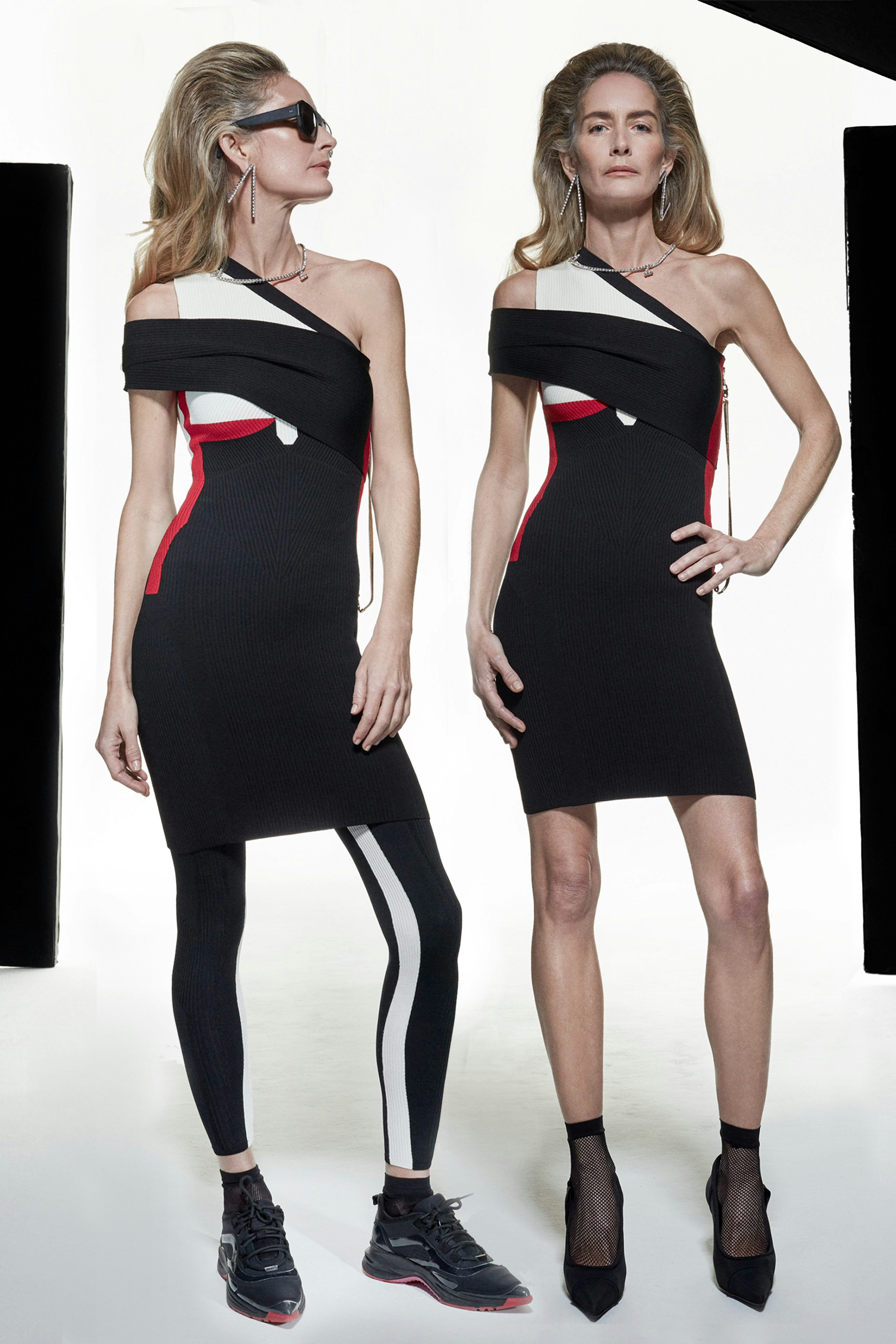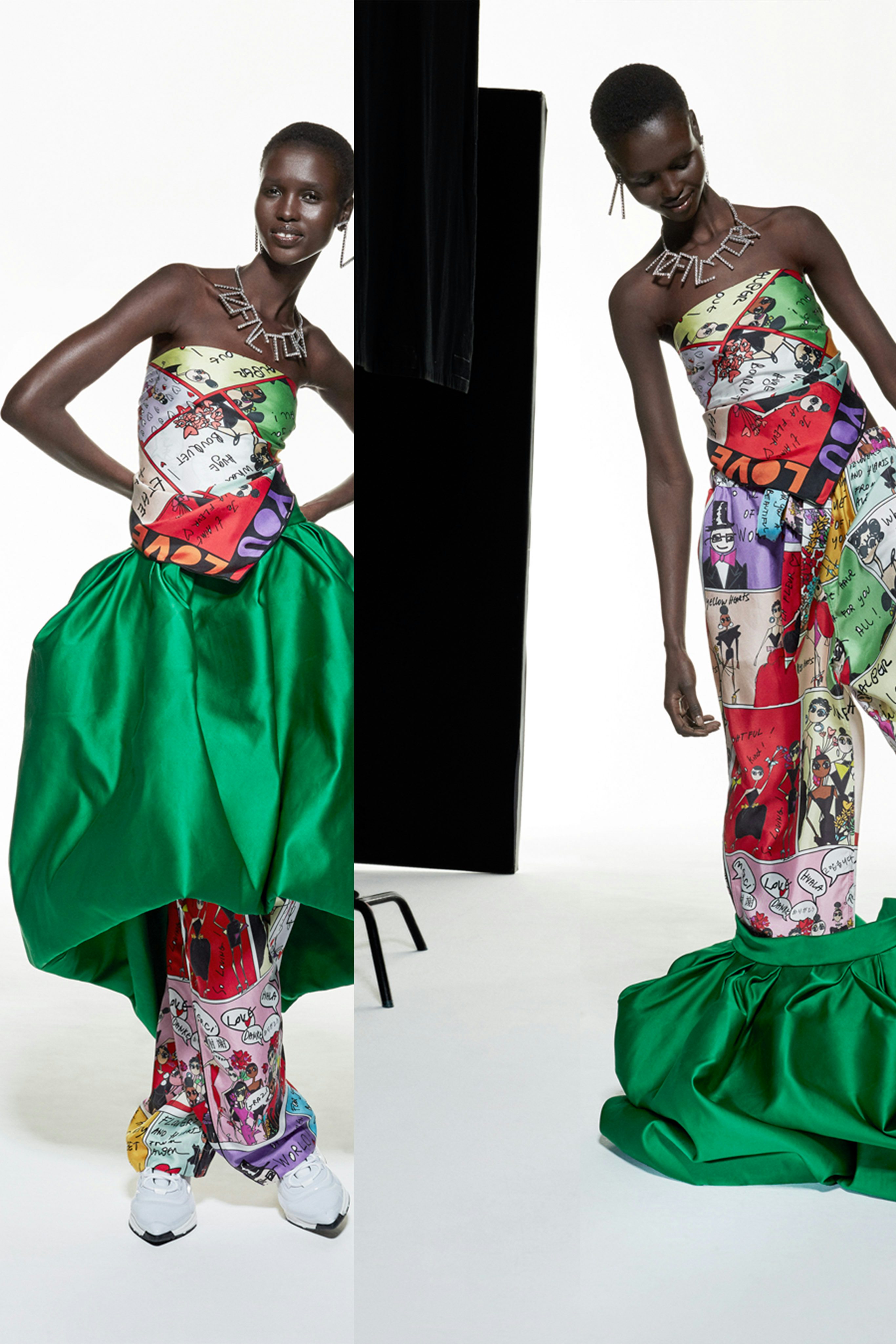Inside Alber Elbaz’s Return to Fashion | Tim’s Take, Opinion
Five years ago, Alber Elbaz fell so far out of love with fashion that “What next?” weighed heavy on him. One industry exec heard he was planning a move into electronics. Elbaz chokes with laughter at the very thought. “I have zero sense of technology,” he zoomed at me. “And I don’t even have a driving licence so I cannot be a cab driver.” Minus even that option, what else could he do but face the fact that he needed to find himself again in the only business he knew?
Boredom was Alber’s best friend on that journey home. It made him think, took him to new places. He claimed he was working on almost 50 different ideas, but potential investors were always asking for business plans. The only person who didn’t ask was Johann Rupert, the chief of luxury conglomerate Richemont. After a three-hour conversation, he gave Elbaz the green light on his biggest, brightest idea. The world got to see just what that was on Tuesday night with the virtual premiere of “The Show Fashion,” a mock-doc celebrating the rekindling of Alber’s love affair with fashion under the label AZ Factory. A handmade invite arrived at home with a bag of spirulina popcorn. I settled in.

AZ Factory Spring/Summer 2021 at Paris Couture Week. AZ Factory.
A.Z. The first and last letters of his name. Is it A-Zed or A-Zee? He suggested AZ. And “Factory” because, “It’s not me, it’s us. I love the factory, the simplicity, the honesty. I love they bring a sandwich from home. I love the voice of the machine.” There are 20 workers and 10 interns in AZ Factory. “There’s zero ego, we’re coming in as a start-up,” Elbaz said. “We all had to quarantine. I haven’t even met them without masks.” Those restrictions pale beside his sense of liberation. “I don’t want to be about 400 SKUs, 600 SKUs. I couldn’t do that anymore. We will tell one story at a time. The idea is to start things a little bit simpler. Which is difficult for me because I like a lot of everything. But here I have to be creator and curator.”
AZ Factory has been shaped as the solution to several pressing fashion problems. Is it necessary? Is it relevant? “And is it at a turning point,” Elbaz asked himself, “or is that just my question?” He didn’t want to go back to his own past, but when he looked at couture’s, he was struck by how the designers always wore white coats, like doctors or scientists. “That was the reason why I allowed myself to present during couture week. I’m not showing dresses with 50 metres of fabric — it’s more like 1.5 metres — but couture stands for a laboratory of experiments and individuality.” Which was also the launchpad for AZ Factory.
A trip to Palo Alto sparked more questions and a Eureka! moment. “Can technology and fashion co-exist? Can emotion and intuition live with a world of data and algorithms? Can designers and CEOs live in peace, or is it war? The best success comes when the two are together, yin and yang.”
The first story Elbaz chose to tell with AZ Factory was appropriately foundational: “I wanted to engineer something anatomical, a new knitwear dress that could shape your silhouette.” In the end, there were 10 dresses, created from a new kind of jersey: a smart fabric with 13 different elasticities in different parts of the body, hugging where it was needed, releasing where it wasn’t. Also, ergonomic sleeves; perforations so the fabric breathed; corset bones moved from the front to the back to give support. And a necklace-like puller for the zip that ran all the way down the spine, so women could do themselves up. There was the option of a huge bow to attach at the back, for some couture pizzazz. That was the package that will launch AZ Factory on e-commerce. In the weeks that follow, it will be recoloured in red (for Valentine’s Day) and a rainbow (“Selfie-friendly,” said Elbaz).

AZ Factory Spring/Summer 2021 at Paris Couture Week. AZ Factory.
The second story was the real kicker: three skirts, two tops, two jackets, one jogging suit. It’s been a year of convenience dressing, comfort clothing. “Everyone wanted stretch and jogging suits, but how do you transform from leisurewear to something more fabulous?” Elbaz mused. Answer: you could stay in your sneakers and joggers, pull on a skirt in duchesse satin (yarn recycled) and you’re New Balance to Balenciaga in a heartbeat. His marriage of athletic and couture was audacious but irresistible. The double-breasted tuxedo jacket in black duchesse, the satin balloon skirt, the incongruous glamour in tandem with a tracksuit. Not to mention the sneakers that Elbaz showed with everything, pointed, like pumps, because he kept hearing that women missed the way a pointed toe elongated the leg. “Sneaky pumps” he called them, and “The Show Fashion” did a fine job of promoting their versatility.
He also worked with graphic artists (including cult London ceramicist John Booth) on designs for pyjama sets. “I was wearing them a lot, missing a hug more than anything, so one print is all about hugging. I was missing kissing so we created a fabric that is all about kissing. You can wear it with a tuxedo at home. There’s a print of all these women dancing. Pull a big ball of fuchsia duchesse over that. I did a sketch of a love story [I’m thinking it’s Jean Paul Belmondo and Anna Karina in Jean Luc Godard’s Une Femme est une Femme but I could be wrong]. You could wear that with a duchesse skirt or pants. A-Z Lazy, you wear at home, A-Z Crazy, you go out.”
The third story’s challenge was taking the microfibre nylon that is used in activewear and turning it into a high fashion fabric. Elbaz took the fibre from the laboratory in Spain that produced it to a start-up in Amsterdam where it was given a luxe new dimension. If “The Show Fashion” mock-doc was at times a little over-egged and arch, its visit to the fabric manufacturer was riveting, if only to underline that Elbaz was on to something that felt quite unique, not in a dreamy way, but in a spirit of research-based pragmatism that pointed to a post-Covid future.
And consider this: everything is sized XS to XXXL, and priced between €230 and €1200. “I like the idea of fashion that can work for everyone,” Elbaz said. “More than beautiful, purposeful is important to me.” Yes, the purpose was persuasive but the sheer chic (and cheek) of AZ Factory was what seduced. Turning point indeed.
Related Articles:
Alber Elbaz Is a ‘Zoombie’ Now
Alber Elbaz: Improvising for a New Era


